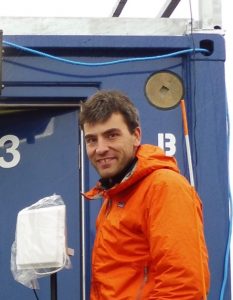Gijs de Boer
March 9, 2016

I will be working with a team of University of Colorado Boulder researchers and students at Oliktok Point, Alaska from April 2 to April 16 to deploy two unmanned aircraft, the CU Pilatus and the CU DataHawk 2. We developed these aircraft and instrumented them in collaboration with the Research and Engineering Center for Unmanned Vehicles (RECUV) in CU-Boulder’s Aerospace Engineering department. The purpose of these flights is to obtain measurements of thermodynamic properties, aerosols and radiation over the lowest levels of the Arctic atmosphere at the tail end of the Arctic Haze (pollution) season. The data collected during these flights will aid in understanding the lifecycle of Arctic aerosols and clouds, as well as their impact on the energy exchange between the atmosphere and surface. In addition, they will make measurements to study small scale wind patterns, and the vertical mixing of air between the surface and cloud height, all of which are critical components of improving the predictability of the Arctic atmosphere and sea-ice. Follow my work, funded by the U.S. Department of Energy and supported by CIRES and NOAA, on this blog.
